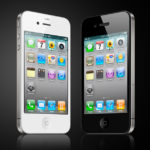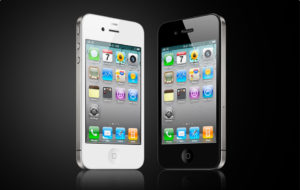
Apple’s iPhone 4, which went on sale June 24, features a mobile video conferencing application that could increase collaboration among students and faculty at different locations and make on-the-go meetings easier for higher-education officials.
Video conferencing is possible with the addition of a second camera on the front of the new iPhone, in addition to a five-megapixel camera and a flash on the back. For now, the video conferencing function, FaceTime, works only if both parties to the call have an iPhone 4 and are connected over a Wi-Fi network rather than a cell phone network.
Apple CEO Steve Jobs indicated that FaceTime eventually will work over cellular networks, saying Apple needs to “work a little bit” with wireless providers to make it “ready for the future.”
The iPhone’s FaceTime feature could help campus technology staff hold meetings from different locations and troubleshoot specific problems.
SysAid Technologies is one company that has launched an iPhone IT assistance application. The Helpdesk Application and SysAid IT Mobile help IT staff control service requests, including viewing, updating, filtering, and customizing requests.
IT specialists might find the FaceTime application helpful during conversations if they must identify specific messages on computer screens or relay instructions for a procedure occurring across a campus.
Various media outlets and technology enthusiasts have expressed differing opinions of FaceTime and whether the feature will succeed.
The San Francisco Chronicle predicted that FaceTime will be a success, because mobile video conferencing “is available on a device that will achieve sufficient saturation among groups,” the Wi-Fi networks over which FaceTime is set to operate will make the application look and sound top-notch, and Apple likely will make the application very easy to use, prompting more participation.
Meanwhile, CNET pointed to a handful of reasons why the video conferencing feature might not prevail: Holding a cell phone at arm’s length to capture a continuous image of the caller’s face, while keeping one’s arm steady enough so that the image is not shaky, is not physically comfortable after a while. CNET also said that video calls are awkward by nature, and because FaceTime operates only on Wi-Fi for the time being, users will be forced to use the feature at home, at school, or in other Wi-Fi hotspots.
The news site also said that “according to Apple, FaceTime won’t support 3G this year, which is strange given that Fring, Skype, and other VoIP apps offer it.”
Apple isn’t the first company to offer video conferencing on a mobile device. Sprint HTC EVO 4G users can video chat with the new Qik software offered on the phone. And with Fring, users can make free mobile video calls and live chats over a cellular or Wi-Fi network with other Fring members and other services such as Skype, GoogleTalk, Facebook, and more.
But Apple’s support of mobile video conferencing could help spur adoption of the technology, given the company’s considerable influence.
Apple is trying to tighten the links between the iPhone and its iPad tablet, which came out April 3. It is releasing a version of its iBooks eReading application for the iPhone, which means people could buy an eBook from Apple on either device and read it on either one as well.
That compatibility could incite more universities and iPhone-toting college students to turn to the iPad as an eReader.
The new iPhone 4 also has a higher-resolution screen, longer battery life (up to seven hours of talk time—an improvement over five hours on the last model), and thinner design. It will cost $199 or $299 in the U.S. with a two-year AT&T contract, depending on the capacity. The iPhone 3GS, which debuted last year, still will be available, for $99.
The new phone runs the latest version of Apple’s mobile software, now called iOS4, which Apple unveiled in April to offer such features as the ability to operate more than one program at a time. Users of older iPhones and iPod Touch devices can get iOS4 as a free download, though not all features will work on the older devices.
Although the iPhone 4 has arrived, for some people the wait continues as Apple sprints to keep up with fierce demand for its latest gadget.
From Tokyo to San Francisco, some stores started selling out of Apple’s newest iPhone just hours after it went on sale June 24. Some would-be buyers walked away disappointed; tensions grew at Apple stores that hadn’t run out.
It seems even Apple was surprised by the number of people who wanted to snap up the fourth version of the iPhone. More than 600,000 had rushed to pre-order iPhones on the first day they were available, prompting Apple and its exclusive wireless partner in the U.S., AT&T, to stop taking orders for pickup or shipment by the June 24 launch. On Apple’s web site, new orders weren’t promised for delivery until July 14.
Those who didn’t order in advance lined up outside Apple stores in the hopes of snagging one on a first-come, first-served basis.
Apple spokeswoman Natalie Harrison said demand was “off the charts,” and that the company was working hard to get phones into customers’ hands as quickly as possible.
Some stores sold out completely within hours. Brian Marshall, an analyst for Gleacher & Co., said Apple is having a hard time getting enough of the new custom parts for the iPhone 4, such as its new higher-resolution screen. Apple has said the white iPhone it plans to produce has been more challenging than expected and won’t be available until late July. Only black models went on sale June 24.
- 5 trends impacting higher ed’s path in 2024 - May 8, 2024
- Are AI skills more important than degrees? - May 2, 2024
- Report forecasts a ‘surge’ in GenAI adoption - April 26, 2024

